- Acronym Guide
- AAM
- ABS
- AC
- ACAS
- ADS-B
- AFAC
- AGL
- AI
- AIM
- ALS
- AM
- AMA
- ANSP
- AOI
- APPI
- AUV
- AUVSI
- ARPAS-UK
- ASTM
- ATC
- BVLOS
- CAA
- CAAC
- CAB
- CAP
- CASA
- CATT
- CBO
- CBR
- CBRN
- CDMA
- CDR
- CFI
- CFR
- CIR
- COA
- COMINT
- CORS
- COTP
- COTR
- CPTED
- CV
- C2
- DAA
- DAS
- DEM
- DFI
- DFS
- DGCA
- DHS
- DOD
- DPA
- DPEs
- DRG
- DRO
- DSM
- DSMX
- DSP
- DSSS
- DTM
- EASA
- EFT
- EO
- EOD
- EO/IR
- ELINT
- EMI
- ESC
- EVLOS
- eVTOLs
- FAA
- FCC
- FCS
- FHSS
- FICCI
- FLIR
- FOB
- FOV
- FPS
- FPV
- GBDAA
- GCP
- GCS
- GDPR
- GML
- GNSS
- GPS
- GSD
- GVC
- HDR
- HOGE
- IACRA
- ICAO
- ICS
- IMU
- INS
- IR
- ISA
- ISR
- ITU
- JARUS
- LAAMS
- LAANC
- LAATM
- LAI
- LAS
- LBA
- LIDAR
- LOS
- LSALT
- MAC
- MAVLink
- MLIT
- MMS
- MSL
- MTOM
- NDAA
- NCSL
- NFZ
- NIST
- NMEA
- NOTAM
- NPA
- NPRM
- NTIA
- OBIA
- OEM
- OFDM
- OOP
- PASM
- PAV
- PCV
- PdM
- PEC
- PIC
- PID
- PIPL
- PLD
- PM
- PN
- PPK
- PPS
- PSM
- PWM
- UAM
- UAOP
- UAS
- UASTM
- UAV
- UCAVs
- UHD
- UHF
- USV
- UTM
- RAIM
- RCC
- RCS
- RFI
- ReOC
- RePL
- RMS
- ROI
- RPAS
- RPC
- RTH
- RTN
- RTK
- SaR
- SAR
- SARP
- SBAS
- S.Bus
- SBIR
- SEDENA
- SfM
- SFOC
- SIGINT
- SLAM
- SMS
- SOP
- SORA
- STANAG
- STTR
- STK
- sUAS
- TCAS
- TCCA
- TFR
- TIN
- TOF
- TP
- TPS
- TSA
- VHF
- VLOS
- VTOL
Drone Acronyms
What is RPC (Remote Pilot Certificate) and How Does it Work?
By
Jacob StonerTable Of Contents

Definition
RPC stands for Remote Pilot Certificate. It is a certification issued by aviation authorities, such as the Federal Aviation Administration (FAA) in the United States, to individuals who have demonstrated the knowledge and skills necessary to safely operate unmanned aircraft systems (UAS) for commercial purposes. The RPC is a requirement for drone operators under Part 107 of the FAA regulations.
Usage
The Remote Pilot Certificate is used to authorize individuals to legally operate drones for commercial purposes. It signifies that the holder has met all regulatory requirements, including passing a knowledge test and understanding airspace classifications, weather effects, UAS loading, emergency procedures, and other critical aspects of drone operations.
How Does a Remote Pilot Certificate (RPC) Work?
Obtaining the Certificate:
- Eligibility Requirements:
- Age: You must be at least 16 years old.
- English Proficiency: You need to be able to read, speak, write, and understand English.
- Health Condition: You must be in a physical and mental condition that allows safe operation of a UAS.
- Knowledge Test:
- Preparation: Study the FAA’s Part 107 regulations and other relevant materials. The test covers a range of topics, including airspace classification, weather effects, UAS loading, and emergency procedures.
- Testing Centers: Schedule and take the Aeronautical Knowledge Test at an FAA-approved testing center. The test consists of 60 multiple-choice questions, and you need to score at least 70% to pass.
- Application Process:
- IACRA Submission: After passing the knowledge test, apply for the Remote Pilot Certificate through the Integrated Airman Certification and Rating Application (IACRA) system. This involves filling out an application and providing test results.
- Security Screening: The Transportation Security Administration (TSA) conducts a background check to verify your eligibility.
- Certificate Issuance:
- Temporary Certificate: Once your application is processed and approved, you receive a temporary Remote Pilot Certificate, allowing you to begin operations immediately.
- Permanent Certificate: The FAA mails your permanent certificate, which is valid for two years.
Operating with the Certificate:
- Operational Guidelines:
- Adherence to Part 107: Follow all Part 107 regulations, including maintaining visual line of sight, flying only during daylight hours or twilight with appropriate lighting, and not flying over people or moving vehicles.
- Airspace Authorization: Obtain necessary waivers and authorizations for operations in controlled airspace or for specific types of operations not covered under standard Part 107 rules.
- Safety Practices:
- Pre-Flight Checks: Conduct thorough pre-flight inspections and risk assessments to ensure safety and compliance.
- Reporting: Report any accidents that result in serious injury or property damage to the FAA within 10 days.
Maintaining the Certificate:
- Recurrent Training:
- Renewal Requirements: Every 24 months, you must pass a recurrent knowledge test to keep your Remote Pilot Certificate valid.
- Continuing Education: Stay updated on changes in regulations, airspace use, and advancements in drone technology to maintain a high level of competency.
By following these steps, you can obtain and maintain a Remote Pilot Certificate, allowing you to operate drones legally and safely for commercial purposes under FAA regulations.
Relevance to the Industry
The RPC is essential for the growth and professionalism of the drone industry. It ensures that commercial drone operators have the necessary knowledge to conduct safe and compliant operations. Holding an RPC is mandatory for anyone looking to engage in commercial drone activities, such as aerial photography, surveying, inspections, and delivery services.
Example in Use
“The photographer obtained a Remote Pilot Certificate to expand their business by offering drone-based aerial photography services.”
Frequently Asked Questions about RPC (Remote Pilot Certificate)
1. How do you obtain a Remote Pilot Certificate?
Answer: To obtain a Remote Pilot Certificate, you must:
- Pass the Part 107 Knowledge Test: Take and pass the FAA’s Aeronautical Knowledge Test at an approved testing center. The test covers topics such as regulations, airspace, weather, loading, and emergency procedures.
- Complete TSA Security Screening: Undergo a background check by the Transportation Security Administration (TSA) to ensure eligibility.
- Apply for Certification: Submit an application through the Integrated Airman Certification and Rating Application (IACRA) system.
- Receive the RPC: Upon approval, you will receive your Remote Pilot Certificate, which is valid for two years.
2. What are the benefits of having a Remote Pilot Certificate?
Answer: The benefits of having a Remote Pilot Certificate include:
- Legal Compliance: Enables you to legally operate drones for commercial purposes in compliance with FAA regulations.
- Increased Opportunities: Opens up various business and employment opportunities in industries such as real estate, construction, agriculture, and media.
- Enhanced Credibility: Demonstrates a professional level of knowledge and expertise, enhancing your credibility with clients and employers.
- Access to Controlled Airspace: With appropriate authorizations, allows you to operate in controlled airspace, expanding the range of potential projects.
3. How do you maintain a Remote Pilot Certificate?
Answer: To maintain a Remote Pilot Certificate, you must:
- Renew Every Two Years: Pass a recurrent knowledge test every 24 months to keep your certificate current.
- Stay Informed: Keep up-to-date with changes in regulations, technology, and best practices in drone operations.
- Report Incidents: Report any incidents that result in serious injury, loss of consciousness, or property damage exceeding $500 to the FAA within 10 days.
- Adhere to Regulations: Continually comply with FAA regulations and guidelines for safe and legal drone operations.
For examples of these acronyms visit our Industries page.
As the CEO of Flyeye.io, Jacob Stoner spearheads the company's operations with his extensive expertise in the drone industry. He is a licensed commercial drone operator in Canada, where he frequently conducts drone inspections. Jacob is a highly respected figure within his local drone community, where he indulges his passion for videography during his leisure time. Above all, Jacob's keen interest lies in the potential societal impact of drone technology advancements.
Pros
Cons
You may like
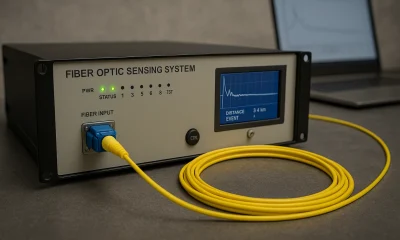

What is DAS (Distributed Acoustic Sensing)?
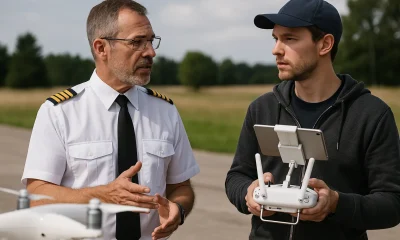

What is CFI (Certified Flight Instructor) & How Does it Work?
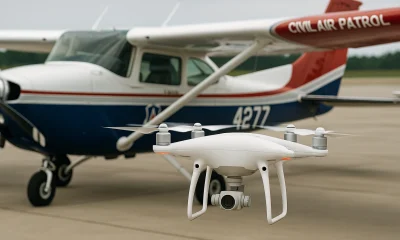

What is CAP (Civil Air Patrol) & How Does it Work?
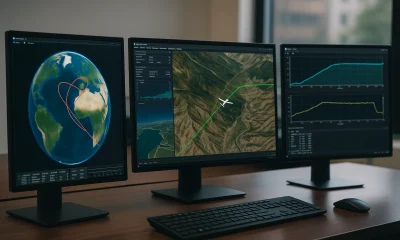

What is STK (Systems Tool Kit) & How Does it Work?
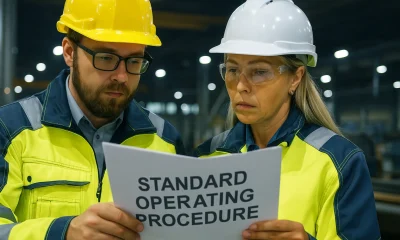

What is SOP (Standard Operating Procedure)?


What is RTN (Real-Time Network) & How Does it Work?